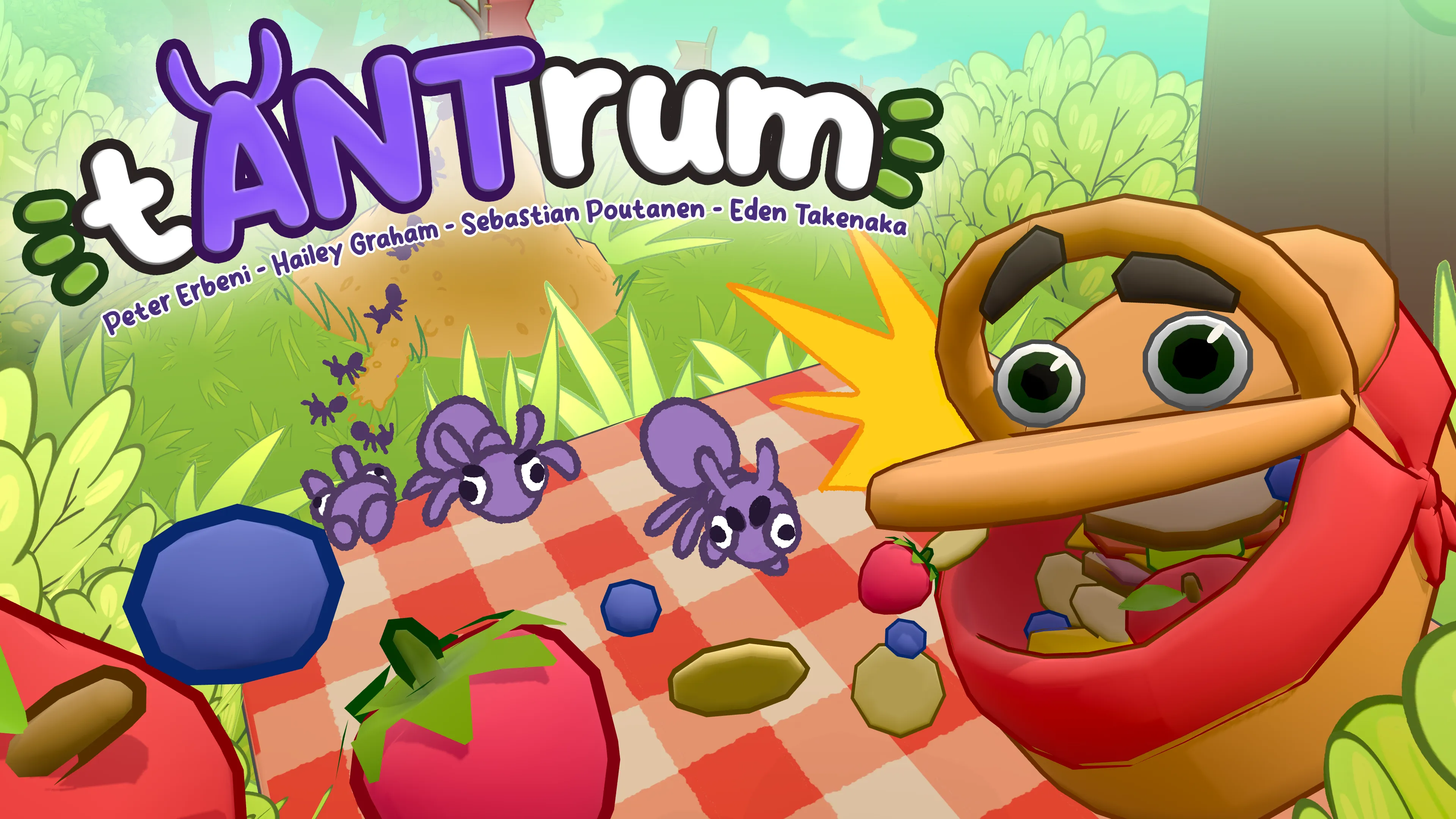tANTrum
Developed by
Peter Erbeni,
Hailey Graham,
Sebastion Poutanen,
Eden Takenaka,
Direct Contributions
- Created a custom path generation system using splines
- Designed the initial VR concept
- Integrated Event Bus and Message Bus patterns into the core architecture
- Applied Single Responsibility and Interface Segregation SOLID principles within the core architecture
- Voice-acted the main NPC character
- Implemented the main mechanic allowing the player to shrink and unshrink onto towers
- Developed a basic enemy wave system
- Implemented a tutorial system for player onboarding
Skills Demonstrated
C#
Unity
Voice Acting
Virtual Reality
Git
Gameplay
Gameplay Tools
About
tANTrum is a VR tower-defense game where you play as a ghost tasked with protecting your best friend, a living picnic basket named Basko, from swarms of hungry ants. You defend Basko by placing towers and actively participating in the action through repairing broken towers and using a personal weapon to aid in the defense. The game was developed in Unity and deployed as a standalone VR experience, eliminating the need for cables.
Outcomes
This project strengthened my foundational understanding of SOLID principles in code architecture, particularly Single Responsibility and Interface Segregation, while also improving my implementation of the Event Bus and Message Bus patterns using static utility events. The project was also showcased at the QUT Open Day and Immersive Festival, where we had a dedicated section to present our game to prospective university students and industry professionals.
